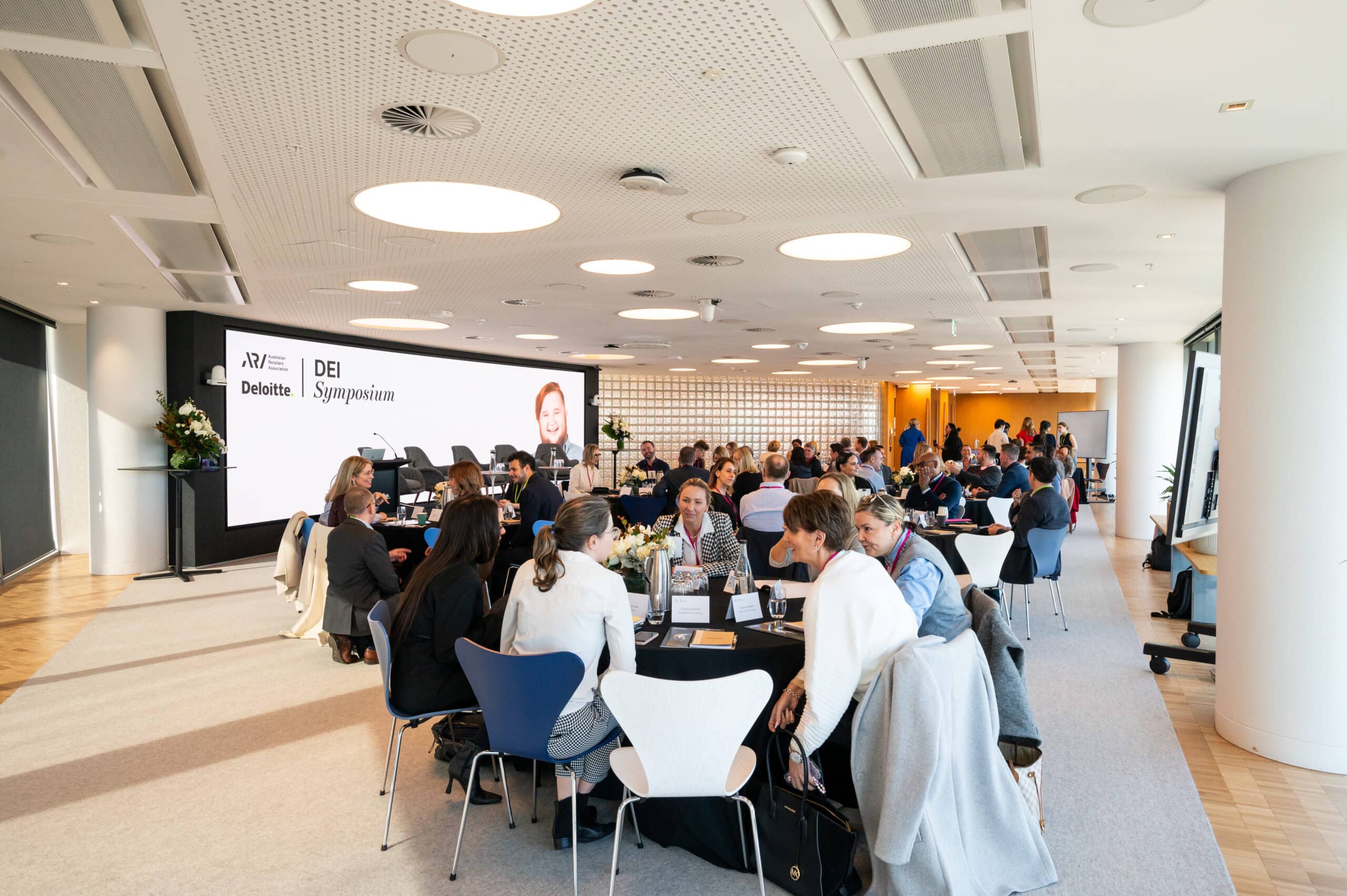Last week marked another important moment in our collective efforts to build a more inclusive retail sector, with our third annual Diversity, Equity & Inclusion (DE&I) Symposium, co-hosted with ARA Strategic Partners, Deloitte.
This year’s symposium brought together leaders from across the industry to share best practice, hear from subject matter experts, and build on the foundations of change.
The symposium also provided an opportunity to confront recent challenges across our society and industry, including: the ANROWS research that reported that 48% of women experienced sexual harassment in the workplace; the Deloitte Access Economics research that found that $128b a year would be unlocked to the economy by breaking gender norms; the challenges of progressing DE&I initiatives in our board rooms; the impact of silence in the face of oppression; and the impact of toxic masculinity on boys and young men.
Amongst a day full of penny-dropping insights, perhaps the biggest takeaway of all was the need to address the increasing apathy toward DE&I issues – a concerning trend highlighted by our Keynote speaker Annika Freyer, CEO of Champions of Change Coalition.
Accountability, transparency and leadership
During an address by Janette Kendall from Vicinity Centres, the importance of strong leadership was highlighted. A need to look at who is in the room making the decisions and their understanding of DE&I is vital to driving change. Moving beyond statutory reporting responsibilities to think about how policies are living and breathing documents is imperative to creating inclusive organisations.
The Deloitte Access Economics report highlighted six steps to change. The fifth step reflected that actions around DE&I can often be performative. There’s a need to create transparency and accountability with clear targets set to achieve change.
Taking an intersectional approach
The term intersectionality is often derided as being overly jargonistic but – at its heart – it is a very human concept. It reflects that we don’t just experience the world through one lens, we have multiple identities that intersect, and interact and that shapes our lived experience. This is more prevalent when those identities are historically marginalised.
For example, Black women may face unique challenges that neither Black men nor white women will face. Intersectionality underscores the importance of understanding these overlapping identities to address systemic inequalities in a way that acknowledges the complexity of human experiences.
Exploring how to use an intersectional approach when considering our actions was another key theme of the day. How are we ensuring that our efforts are not only benefiting some members of different communities?
Virginia Mapedzahama, from the Diversity Council Australia reflected the need to build our understanding of intersectionality. Focusing on where multiple marginalised identities meet is key to ensuring our efforts are effective across the board. Something the RISE program was set up to address.
There’s a need to address stereotypes in the product development and launch processes. Our customer base is diverse, so making assumptions about primary consumers’ risks perpetuating biases and reinforcing negative attitudes to historically marginalised groups.
Being an ally
During the symposium we also heard from Al Green from The Man Cave, an organisation working with boys and young men to be positive role models in discussing gender equity in Australia. Al stressed the importance of meeting young boys and men where they’re at, to look at the world through their eyes to understand how DE&I affects and potentially risk over-correcting historical imbalances – something that can be applied across all of our efforts to address inequity.
With the rise in polarisation across the political landscape, and DE&I being drawn into that discourse, it is essential that we provide a safe space to bring in rather than call out majority groups. We want to create a safe space to explore themes and topics that might be new or confronting for people.
Gender equality has been the key issue for corporate Australia for a number of years now; LGBTQIA+ people have been fighting to combat homophobia for decades; people living with disabilities have been actively campaigning to create spaces they can simply enter. If we are going to continue making progress, we need a concerted effort to bring in those in position of power and privilege to be allies to our efforts.
Collaboration and collective action
While there of always room for improvement, the symposium also demonstrated that there is plenty of good work being done. Harriet Pope from IKEA shared learnings from their Refugee Workforce Inclusion Program. Jemima Grieve presented MECCA’s work to address gender imbalances in their tech roles. And Colleen Starick from Bunnings shared how they developed sensory maps to support neurodiverse customers to navigate their stores.
For a sector like retail, it would be easy to understate the significance of how open and collaborative colleagues are when addressing issues related to DE&I.
The symposium showcased the desire to build a collective approach to the challenges we face. The need to share learnings and capitalise on opportunities will only strengthen our actions.
The ARA remains committed to actively convening spaces to further this work and bring our members together for industry wide action. Our immediate priorities include the launch of our Gender Equality Playbook, development of our Disability Position Statement, and working to develop resources for members beginning their Reconciliation work. We’ll also be engaging with stakeholders to build an industry response to the ANROWS report.
Whilst the DE&I Symposium provided us with a moment to celebrate the wins and reflect on what else needs to be done, our work and collaboration continues as we aim to build a more diverse, more inclusive, more equitable retail sector.
Jordan Lewis is the ARA’s Policy Advisor for Social Impact, including DE&I in the retail sector.
You can see the full gallery of the event here.






















